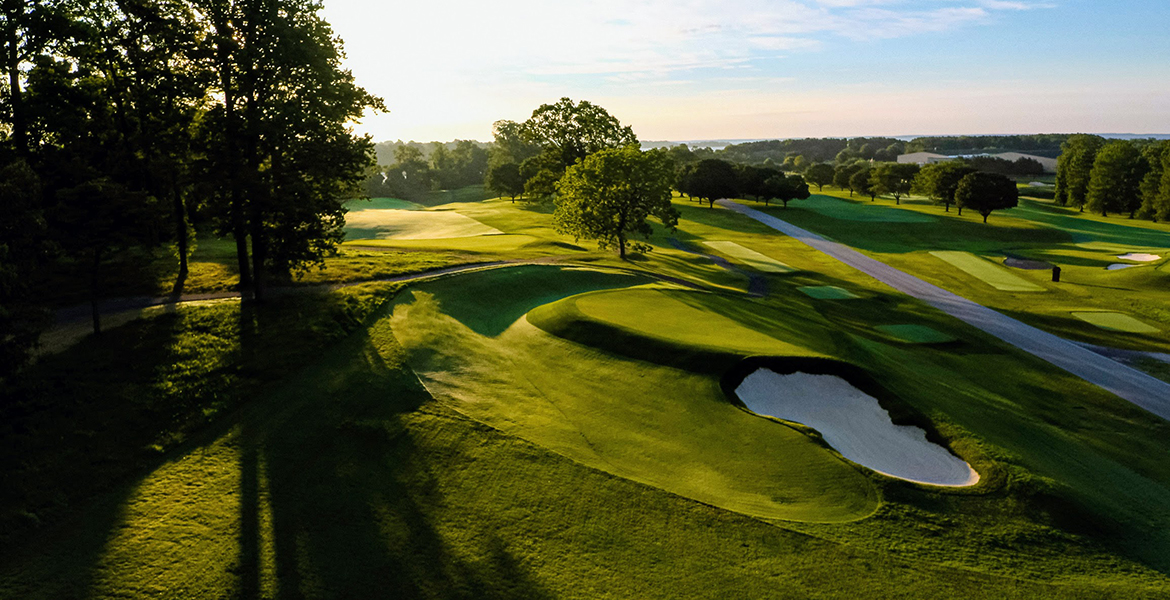
We might say Garden City Golf Club has aged gracefully, except it hasn’t aged at all. It is a small, private club frozen in time, in the heart of a prosperous Long Island town just east of New York City. It is a place where golf simply feels more like golf, where your second step inside the clubhouse confirms your arrival at one of golf’s most sacred cathedrals and your third transforms you to another time and place.
In the latter part of the 1890s, Devereux Emmet was part of a “small but enthusiastic” committee assembled to investigate building of a nine-hole course primarily for guests of the Garden City Hotel. The Island Golf Links opened in May 1897. Within four years it expanded to 18 holes, went private, changed its name and became the premier golf club in America.
Other than some work by Robert Trent Jones Sr. and later by Tom Doak, the course has hardly changed since a 1902 renovation by Garden City’s leading man, Walter J. Travis, one of the club’s earliest members who won the 1900 U.S. Amateur there—quite an accomplishment for a 39-year-old who had been playing the game four years. Two years later the “Old Man” placed second to Laurie Auchterlonie when the club hosted the U.S. Open. At the time that was the highest finish ever by an amateur in the Open.
Travis’ local knowledge made him the go-to guy when it came time to offset the impact of the latest technological revolution, the rubber-cored ball. Travis added and deepened fairway and greenside bunkers and backed up some of the tees to add length.
What Emmet and Travis combined to deliver is something out of the best of the British Isles. Replete with small, deep pot bunkers and waist-high fescue, Garden City plays as hard and as fast as the links courses found along the oceans in Ireland and Scotland. Lies are tight and the wind sees to it that the 6,900-yard, par-73 design never plays the same.
Par is defended by the waist-high rough and the bunkers, which number somewhere around 175 and include numerous great examples of cross bunkering. The small deep pits take an exacting toll. A saying here goes: “If it takes one stroke to get into a Garden City bunker, it takes one stroke to get out.”
Play begins with a pair of great birdie opportunities, a 302-yard par 4 followed by a 137-yard par 3. Get them both if you can, because while No. 2 is the club’s most famous hole, most members will tell you every hole from the 6th to the 16th is fairly exacting.
No. 6, a 440-yard par 4 rated the toughest hole on the course, calls for a well-struck tee ball down the right center of the fairway, followed by a long approach to a slightly elevated green.
The 190-yard 18th is also a tester. Playing over a pond in full view of the members relaxing on the veranda is enough to tighten most grips. The green is an ample target— mostly because it extends to the practice green, but the pair of bunkers in front are deep. The bunker back left is affectionately known, at least most of the time, as the Travis Bunker.
Other reminders of the man appear in the clubhouse, which practically doubles as a museum. There are clubs used by Old Tom Morris and Willie Park, winner of the first British Open in 1860, as well as an 1858 Tom Dunn driver. In the Travis Room are two golf balls and the Schenectady putter, the controversial putter that Travis used to become the first foreigner to win the British Amateur. Below it is a small sign that identifies it as being “regarded by many golf historians as the single most famous club in the annals of the game in this country.”
That same description applies perfectly to Garden City Golf Club.
Par: 73
Yardage: 6,911
Year founded: 1899
Architects: Devereux Emmet, Walter J. Travis






